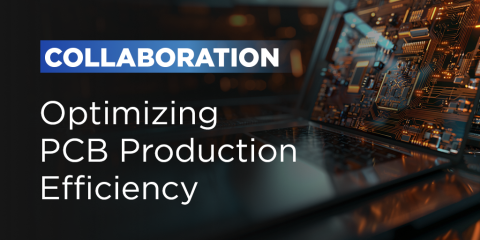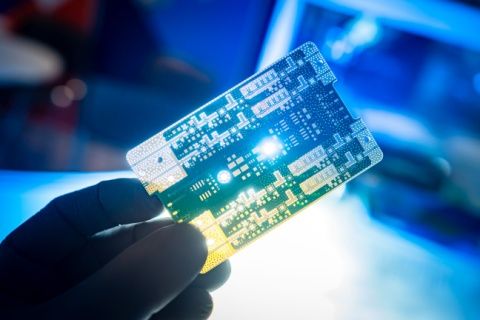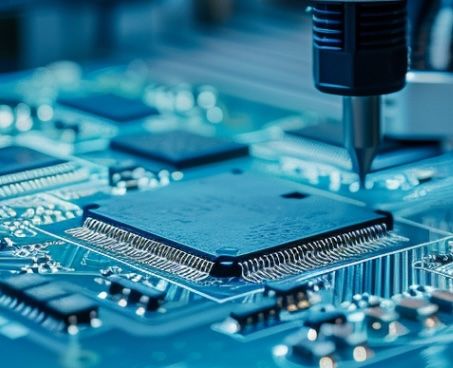Revolutionizing PCB Design: The Role of PLM

The increasing number of printed circuit boards needed in electronics today is pushing designers and engineers to pursue relentless miniaturization, level up performance capabilities, and shrink the development timeframe, shifting the way that PCBs are conceived and brought to life. In such a high-demand environment, traditional design tools are maxing out, which necessitates a change. To answer this need and transition the industry into a more efficient methodology, developers have come up with product lifecycle management tools, which are fundamentally altering the PCB design experience and enhancing design and engineering capabilities to create high-quality, high-performance circuit boards.
A Centralized Hub for Collaborative Work
Prior to PLM, PCB design data often resided in silos, scattered across file servers and individual workstations. Unfortunately, this fragmented approach led to wasted time searching for information, version control issues, and potential errors caused by engineers working with outdated data. Product lifecycle management establishes a single source of truth for all design data, from schematics and layouts to bills of materials (BOMs) and 3D models. The system is, above all else, a centralized repository that facilitates real-time access and collaboration regardless of an engineer’s location; design teams can work concurrently on different aspects of the PCB and iterate on ideas more efficiently, safe in the knowledge that everybody is on the same page. This sort of collaborative environment translates to faster design cycles, fewer errors, and a level of cohesion that boosts the overall productivity of all stakeholders involved.

Automating Repetitive Data Management Tasks
Electronics design and engineering teams will quickly find they need PLM systems once their team grows to the point where it needs a unified workflow and management structure. PLM systems provide a framework to enforce a data management structure, something that is often overlooked by growing companies until problems arise. The important aspect that makes PLM systems unique is that data structures and workflows can be customized and automated to fit a company’s processes. This time-save opens the door for engineers to focus on qualitative tasks that enhance the company’s market offering, such as optimization of circuit performance, research into infantile technologies and components, or, perhaps, the completion of complex design challenges.
Change Management: Enabling Informed Decisions
The PCB design process is intended to be linear, but in reality design cycles can become circular due to reviews and required revisions. Changes and revisions are inevitable throughout the process as engineers refine the design and address unforeseen challenges overlooked by designers; PLM is excellent at managing these changes as it provides a comprehensive audit trail that tracks every modification made to a design. Such efficiencies help engineers understand the evolution of the PCB, assisting them in seeing how certain changes impact different components and pinpointing the source of any potential problems. This level of transparency helps companies make sure that they are empowering their teams with quality knowledge, which results in fewer costly errors or rework, as engineers can make informed decisions about design modifications, and make sure that other stakeholders are aware of the latest design iterations.
The Gap Between Design and Manufacturing — Bridged
The product lifecycle management goes further than the design phase, acting as a bridge between the design and manufacturing worlds. Through integration with manufacturing systems, PLM facilitates a smoother transition from design to production and helps manufacturing engineers access accurate and up-to-date design data directly from a centralized system. Many companies have found that this, for the most part, removes the need for manual data entry and mitigates the risk of errors that come with it, which, historically, has caused significant, timely disruptions to the manufacturing process. It’s important to streamline this data flow if your company intends to lessen production delays, improve first-pass yields (FPY), and reduce costs associated with manufacturing.

Product Development Beyond PCBs
PLM is not just focused on providing data governance functions for one engineering discipline. Just like product development more broadly, PLM systems focus on product data at the system level and inherently build bridges between the engineering disciplines. PLM systems allow for the storage and management of a wide range of product data, including but not limited to mechanical designs, custom firmware, custom software, harnesses and cable assemblies, and much more. PLM systems also allow each piece of a product to be linked to its environmental impact assessments, process details for manufacturing, and service information for relevant stakeholders. It’s a comprehensive data repository that compiles a product’s components and data into a single location complete with the data tracking and version control features engineering teams need.
A Strategic Shift for PCB Design Professionals
The impact of PLM on PCB design signifies a strategic shift in the way that companies, and engineers especially, approach the creation process. Fostering a collaborative environment, like in other industries, automation and the provision of comprehensive, centralized data repositories help them transition from tactical executors to strategic innovators who aren’t weighed down by administrative tasks and other such mundanities. This approach allows engineers to dedicate their expertise to the exploration of new technologies and optimization of performance metrics and to push the boundaries of what was previously considered possible—a shift that leads to the creation of the next generation of PCBs.

In an industry where time to market and product differentiation are of the utmost importance, PLM equips engineers with the tools—and the agility and efficiency—they need to achieve a significant competitive edge. As the future of electronics unfolds, PLM is poised to remain a cornerstone of technology, propelling engineers towards achieving new heights of success and shaping not only the PCB industry but also the electronic devices that we will see in our everyday lives.











